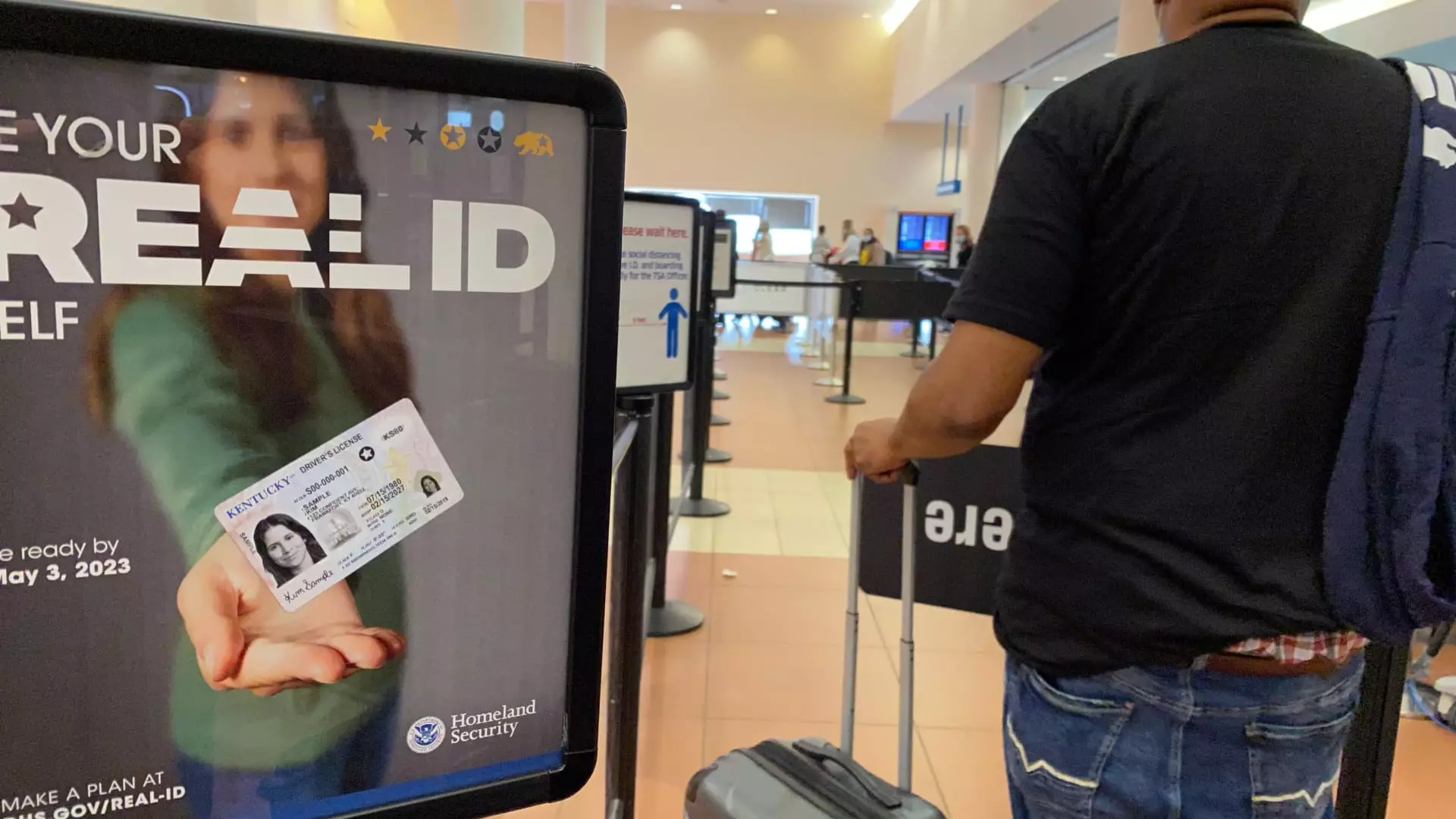As the fateful May 7 deadline looms for the enforcement of Real ID requirements at U.S. airports, it’s important to scrutinize both the timing and ramifications of this mandate. For decades, the Real ID Act has lingered like a specter over airport security, frequently postponed but now poised to finally take effect. The Transportation Security Administration (TSA) claims that around 81% of travelers already possess compliant identification. However, this statistic reveals more about existing inefficiencies than it projects confidence. What about the remaining 19%? The substantial number of individuals who may now face delays or denials at the checkpoint raises pressing questions about the actual readiness of both the public and the infrastructure that supports them.
The urgency being pushed by officials like John Essig, the TSA’s federal security director for New York City-area airports, pushes the narrative that everyone should rush to their local motor vehicle department for a Real ID before the deadline. However, this advice fails to address the real issues on the ground: state agencies are often overburdened, and appointment availability is spotty at best. It begs the question—why impose such a strict deadline without ensuring adequate capacity for citizens to comply?
Governmental Overreach: Security vs. Privacy
The Real ID Act, introduced as a response to the tragic events of September 11, 2001, ostensibly aims to enhance security by ensuring that airline passengers are thoroughly vetted. The legislation has evolved into a complex layer of identification requirements with implications for privacy and civil liberties. While it’s vital to protect against threats, the government’s approach raises the troubling specter of overreach.
Each Real ID-compliant identification card features a marking — a gold or black star — which facilitates the government’s mechanism of ensuring that all IDs meet a specific standard. Yet, this marks a perfunctory victory for safety at the potential cost of citizens’ rights. How far will we allow security concerns to infringe upon our personal freedoms before we recognize the delicate balance between safety and liberty? This question becomes ever more pressing as the deadline approaches, forcing citizens to confront the reality of government surveillance overreach.
The Delicate Dance of Public Awareness
Despite years of marketing and messaging from both federal and state officials, the ongoing confusion surrounding Real ID compliance suggests that the campaign has been less than successful. Flyers distributed at LaGuardia Airport, alongside reminders from the airlines, seem more like frantic last-minute attempts to clean up after a self-inflicted mess. If the percentage of compliant IDs is indeed high, how are travelers unaware of the specifications?
One could argue that the government has failed in its role to clearly and effectively communicate the importance of Real ID. Compounding this failure, the repeated delays serve not only to confuse the public but also to erode trust in government mandates. Will travelers heed the warnings, or will they suffer the consequences of insufficient preparation?
Alternatives: A Mixed Bag
While the TSA has suggested options for travelers unable to obtain a Real ID by May 7—such as passports or permanent resident cards—it is worth examining whether these alternatives are sufficient in practical terms. Suggesting these other forms of identification as a fallback seems somewhat disingenuous when the context of travel has changed drastically post-pandemic.
The TSA’s recommendation for an arrival time of three hours before a domestic flight without Real ID compliance introduces yet another layer of stress and inconvenience. As travel recovers from the pandemic’s paralysis, adding requirements that extend wait times seems counterproductive. Harvard’s 2020 study on traveler anxiety draws a direct line between protracted security checks and decreased passenger satisfaction. The overbearing protocols surrounding identity verification only serve to further alienate the public from an already complex airline experience.
Ultimately, this moment serves as a critical juncture. Will we demand accountability from those who impose these strict requirements while simultaneously taking into account the realistic logistics of compliance? Real ID might be a necessary evil for some, but the operational deficiencies and lack of public clarity surrounding it reveal deeper issues within governmental bureaucracy. As travelers confront the upcoming deadline, it is crucial to encourage a civic dialogue about effective communication, privacy rights, and government responsibilities.

Leave a Reply